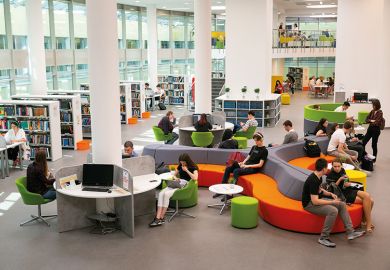There aren’t many places in the US that would resent the world’s most famous university for building a multibillion-dollar science complex in its midst. But Harvard University seems to have had the great misfortune of being located next to one of them.
For more than two decades, residents of Boston’s Allston neighbourhood, just across the Charles River from Harvard’s main campus in Cambridge, have condemned the Ivy League behemoth, established in 1636, for muscling into their community.
Now, as Harvard’s multibillion-dollar science park – known as the Enterprise Research Campus – finally begins sprouting up in the relatively down-at-heel district, higher education may begin to learn if Allston’s anger is largely a gambit to share in a massive tech-fuelled jackpot or a genuine rejection of the gentrification, higher prices and dilution of the historical sense of community that typically comes with such developments.
The benefits for most people of university-industry collaborations on their doorsteps are pretty clear, says Robert K. Triest, professor of economics at Northeastern University, also located in Boston, and former vice-president and economist at the Federal Reserve Bank of Boston.
“You can think of universities”, he says, “as being one of those big job providers that have, in a sense, replaced manufacturing as the economic base for the greater Boston area.” And yet, Triest adds, the virtual certainty that Harvard will bring great prosperity to Allston raises a key question: “To what extent is it shared prosperity?”
The local circumstances are somewhat unique. The city of Cambridge, just north of Boston, contains two of the world’s most prestigious universities – Harvard and the Massachusetts Institute of Technology – within its six square miles, while other high-profile institutions, such as Boston University, Tufts University and Boston College, as well as Northeastern University and others, are also nearby. But the combination of community embrace and resentful pushback facing Harvard is not unprecedented nationwide.
The first and most fabled effort to mix industry and academic science, Stanford University’s Stanford Research Park, hit heavy opposition not long after it was built on some former fruit orchards in 1951. Yet it survived, famously, as the driving force of the development of Silicon Valley, and many imitators have since been established. The Association of University Research Parks now represents about 115 such developments in 42 US states and 13 countries. Leading examples include Tech Square in Atlanta, Mission Bay in San Francisco, the University City Science Center in Philadelphia and the Innovation District in Oklahoma City.
Many boast impressive outcomes in terms of local job growth, retention of graduates and creation of new companies. A recent detailed analysis of one such development, the Cortex Innovation Community in St Louis, credits it with transforming a city centre that, as recently as the early 2000s, was an urban wasteland into the neighbourhood with the region’s fastest-rising real estate values.
Cortex is aided by several academic partners, including Washington University in St Louis at its western end, and Saint Louis University on its eastern side. Universities typically serve as initial tenants, while the local governments offer tax incentives to private firms; a decade of slow growth at Cortex has been succeeded by a boom over the past few years, with more than 300 companies now having a presence, according to Simon Tripp, a senior director at the consultancy TEConomy Partners. The initial focus on biomedical sciences has also broadened to attract partners in other fields, he adds: “It’s just been really transformational.”
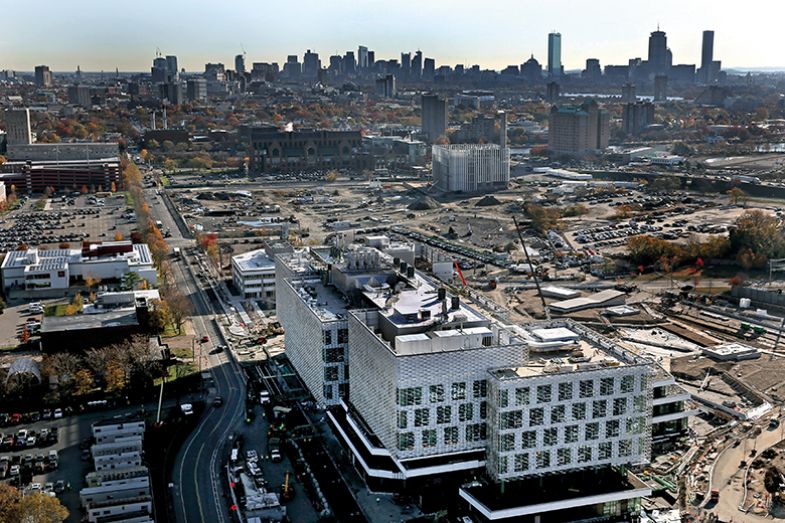
However, as Cambridge and other locales have already seen, that kind of success doesn’t come without setbacks and downsides.
Alongside Stanford’s research park, MIT and its Kendall Square development may be the most renowned university-industry research district in the US. Fed by more than $1 billion in investments in buildings and university facilities over the past couple of decades, the area is now home to more than 60 companies, largely in biomedical fields, estimated to be worth more than $170 billion. Property values around Kendall Square now rival those of midtown Manhattan.
Yet when MIT began seeking large-scale research partnerships with the biotech industry in the 1970s, the companies preferred office parks several miles away, alongside Route 128, Boston’s inner ring highway. The companies “were run in ABC mode – Anywhere But Cambridge”, says Robin Scheffler, an associate professor of science, technology and society at MIT, who is now writing a book on the history of biotech in Boston. “They really did not want to go to Cambridge.”
Scheffler attributes that aversion to the burdens of dealing with a city government that made Cambridge the world’s first municipality to regulate the manipulation of genetic material. The 1970s was also a time of especially stark racial divisions, in which middle-class whites largely avoided the central city regions.
Suburban and rural preferences among white elites, however, went well beyond Boston and Cambridge. Many of the nation’s flagship research universities were also sited on cheap land outside urban areas, and they often had a lot of expansion space around them.
A key impetus for such institutions’ pursuit of corporate partners to develop that land, says Brian Darmody, chief executive officer of the Association of University Research Parks, was the Bayh–Dole Act of 1980 – the federal law that let scientists and universities retain ownership of inventions made with government funding.
And now that racial tensions have eased and urban crime rates have declined in many US cities, there is a renewed appreciation of walkable communities over car-centric planning. Yet while companies now tell Scheffler that “it’s wonderful to be next to MIT”, some long-time residents around Kendall Square see the gentrification that this has brought less as a saviour and more as a destroyer of working-class jobs and affordable homes.
With that tension in the background, community suspicions generated by past Harvard decisions appear to be complicating preparations for the university’s Enterprise Research Campus. Harvard is, to be clear, no newcomer to Allston. Its Roman-influenced football stadium dates to 1903 and sits alongside other sports facilities, as well as Harvard Business School. When the university got the idea to expand its presence in the 1990s, it began buying a few neighbouring properties: apartment buildings and shops hosting small businesses. But in a move typical among the wealthy to avoid driving up the prices of adjacent properties they might also want to acquire, the university disguised the fact that it was the buyer.
Residents were not impressed. Boston’s mayor at the time, Thomas Menino, told Harvard’s then president, Neil Rudenstine, in 1997 that the purchases represented “the highest level of arrogance seen in our city in many years”.
That conflict was followed by the Great Recession of 2008, leaving the project at a prolonged standstill. But, with time, tempers calmed, the recession eased and Harvard hatched bigger plans, buying two adjacent plots of about 50 acres each: one an old rail yard, the other the former site of toll-collection infrastructure for a nearby highway. The purchases give Harvard roughly as much land in Allston as it has in Cambridge: enough room for a new School of Engineering and Applied Sciences and – it hopes – an academic-corporate innovation district to rival Kendall Square.

Announcing the first phase of its development last December, Harvard’s current president, Larry Bacow, said the Enterprise Research Campus will combine urban living with innovative work in art, business and engineering, driving “achievements in research that none of us can imagine”.
But one of the biggest outstanding questions is the degree to which Harvard is willing to ameliorate the impact on long-term Allston residents. Persistent questions on those topics don’t mean that residents want Harvard to get out, according to Harry Mattison, a leader among the Allston community activists. “That’s a ridiculous question,” he says. The goal of fighting Harvard was never about “opposition” so much as “mutual benefit”, he insists.
John Woods, executive director of the Allston Brighton Community Development Corporation, concurs. “People have adjusted their thought process of resisting [Harvard's development],” he says, “and now are sort of thinking: ‘OK, how do we make sure it is as positive as possible?’”
MIT faced a similar dynamic, Scheffler says, when it began transforming Kendall Square in the 1960s from post-industrial squalor. However, it was helped by the fact that the process had already been kick-started by John F. Kennedy – a Massachusetts native – who sought, while US president, to prepare it for use as a Nasa mission control centre. That project didn’t materialise, Scheffler says, and it eventually left MIT with a chance at the open land without opening itself up to blame for having taken it from residents.
The value of MIT’s Nasa-related luck became even clearer, Scheffler says, by contrast with its travails regarding land on the opposite side of its campus. There, he says, MIT spent some 15 to 20 years, beginning in the late 1960s, battling local critics over its purchase of the former Simplex Wire & Cable Company factory – one of the sites it later used for biotechnology companies.
The lesson of both developments, Scheffler says, was that neighbours and politicians will fight hardest at the earliest stages to press any demands because “there’s a sense that it’s hard to get concessions afterward”.
Mattison – a software developer and architect who leads an online discussion board serving Allston – sees that playing out. Harvard created a community forum to hear neighbourhood concerns about the Enterprise Research Campus, but the group “only meets when Harvard wants a building permit”, he says.
The lack of opportunity to talk with Harvard at later stages of developments has left residents fuming over a long list of unresolved requests. These range from major demands, such as for hundreds of units of mixed-income housing inside the Enterprise campus, to smaller ones, such as allowing the community some off-hours access to a new art ceramics studio.
Transit is a major issue. Patrons at the few restaurants and bars alongside Harvard’s vacant Allston holdings have said that they want more parking, but locals want more pedestrian-friendly options. Their fears of major traffic congestion may be overblown, the Association of University Research Parks’ Darmody says, if Harvard adds enough housing. “It’s a conversation that’s a bit unfair,” he says, “because the people who would be [living] there, and who [therefore] wouldn’t be clogging the roads, aren’t represented.” But reasonable or otherwise, Darmody says, such demands reflect locals’ confidence that a place-bound institution such as Harvard has no realistic option to locate its development elsewhere. “So why not ask for as much as you possibly can?” he asks.
Some neighbourhood jealousies around academic-led research developments, in Cambridge or elsewhere, may also stem from suspicions that universities are using their tax-exempt operations to amass large profits from property deals. Some institutions may indeed be doing that, says Martin Kenney, a professor of human and community development at the University of California, Davis. “They’ll make a lot more money on real estate than they’ll ever make on technology licensing,” he notes.
But university partnerships don’t generally excuse private companies from paying property taxes on their operations within technology districts. And nor are the companies obliged to funnel huge amounts of income from patents to their academic partners, Darmody says. Institutions pursue research districts for other goals, he says, such as sharing their scientific discoveries and getting their graduates hired.
“As a quick way to make money,” Darmody says of technology districts, “they’re not very good.”
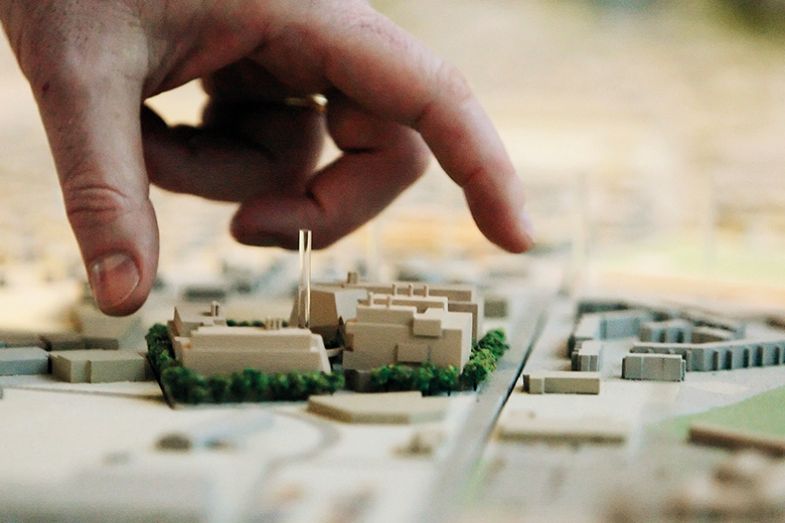
Harvard is making big promises in some areas, but not in others. It has not committed to details of what affordable housing it may provide inside the boundaries of the Allston development: “A specific project proposal has not yet been submitted,” a spokeswoman says. “It all depends on the overall density and unit mix of the eventual project proposal.” However, the university is making concerted efforts to limit price inflation on the edges of its Allston property, as well as avoid such properties filling up with transient tenants who lack community roots. One method already under way involves working with Woods and his non-profit development corporation to buy and then resell existing Allston houses with new deeds that ban their future use as private rental units.
Other Harvard promises include pedestrian walkways, protected bike lanes, a new repertory theatre and state-of-the-art storm-water drainage systems. It also has pledged up to $58 million toward the cost of a new subway station to serve the area. Many of those, however, are amenities that appear tailored to the wishes of the students and corporate professionals for which the Enterprise Research Campus is being designed.
Even the subway line commitment may prove contentious. Kendall Square, Scheffler says, is enduring a fight between biotech industry leaders, who want substantial new investment in the Boston subway system, and some local advocates, who see an expanded bus service as a bigger priority for lower-income workers.
Just satisfying the primary constituencies in academic-industry development can be tough. One example, TEConomy’s Tripp says, is Mission Bay. It is now a community of high-end condominiums, a new research campus of the University of California, San Francisco and dozens of biotechnology companies. But it was a lot bleaker initially, Tripp says, recalling a tour of the research park he made several years ago.
“You felt like you were walking along this long block of sort of concrete or mirrored glass, and you couldn’t see any activity,” Tripp says. “They recognised that and it’s now changing and maturing.”
MIT knows the feeling. “One of the major points of contention around Kendall for a long time,” Scheffler says, “is there were no grocery stores.”
Advocates of academic-industry research districts face some far tougher issues, however. One, says Tripp, is the need to avoid replicating the technology industry’s neglect of racial equity.
Another, according to LaDale Winling, an associate professor of history at the Virginia Polytechnic Institute, is the inescapable fact that some people living nearby will unavoidably suffer lost homes, lost jobs or both.
City leaders around the US understand that, according to Winling, author of the 2017 book Building the Ivory Tower: Universities and Metropolitan Development in the Twentieth Century, which examines the role of US universities as real estate developers. Nevertheless, they back such projects on the understanding that they benefit their communities overall.
Indeed, according to Northeastern’s Triest, “most communities would give their eye teeth for” such developments.
“But some steps need to be taken,” he adds, “to make sure that those who might suffer from some of the gentrification are made more than whole.”
Paul Basken
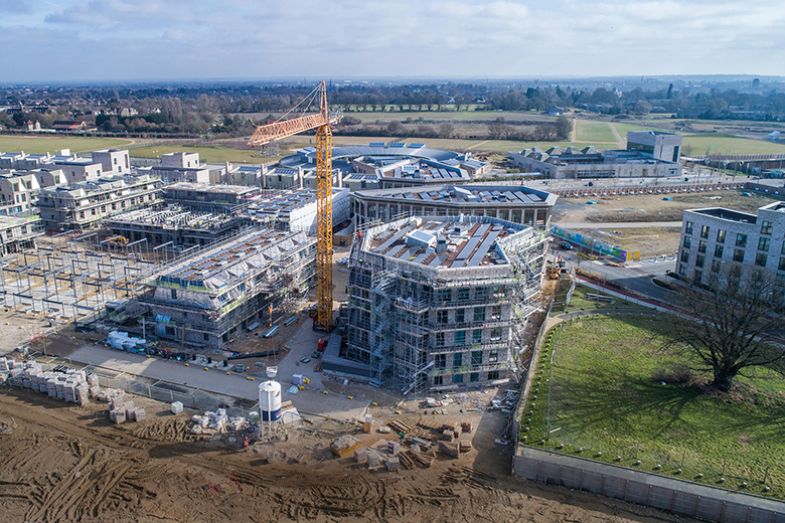
Cambridge, UK: The golden goose that outgrew its pen
For decades, the outsider’s view of Cambridge would not have stretched beyond traditional images of King’s College Chapel, punting on the Cam and students in bow ties and ball gowns getting extremely drunk at May Balls.
But in recent years there has been even more media coverage of Cambridge’s swelling economic significance, driven by the science and innovation clustered around the University of Cambridge’s research power and supply of graduates. And with the new Conservative government’s intention to make science the keystone of the UK’s post-Brexit economy, the burgeoning research parks of “Silicon Fen” may be seen as the geese that will lay the biggest golden eggs.
Cambridge has been described by The Times as “the UK’s fastest-growing city economy” and by the university’s pro vice-chancellor for enterprise and business relations as “the most successful innovation engine in Europe”, whose spinouts have reportedly raised more capital than any other university worldwide. Huge multinationals, such as Microsoft, Apple, Amazon and AstraZeneca, have also moved in.
Indeed, Cambridge’s recent economic growth rates may be the highest ever seen in any UK city, says David Cleevely, an entrepreneur who founded the Cambridge Network to bring together academics and business figures in the high-tech sector. The latest index of UK cities compiled by urban policy research unit Centre for Cities notes that Cambridge is first among UK cities for patent applications per capita, second for the proportion of its population with high-level qualifications, fifth for employment rate and sixth for average earnings. And it is first for growth in housing stock.
Cambridge’s population has grown by about 20 per cent over the past 15 years, but its current headcount is still only 125,000. That is little more than that of Cambridge, Massachusetts – but the Boston Metropolitan area is home to nearly 5 million people, while Greater Cambridge has just 300,000.
For most of the postwar era, planning policy in Cambridge, heavily directed by the university, aimed at preserving its nature as a historic “university town”, deliberately excluding industry and significant housing growth. Green spaces continue to encircle the historic city centre, such as Midsummer Common, where you can walk by the river while dodging grazing cows. But the fact that Cambridge is far smaller than it would have been if natural expansion had been allowed has resulted in a housing shortage so severe that a tiny two-bedroomed terraced house originally built as a “cottage” for Victorian railway workers can change hands for as much as £600,000.
The university, taking a different course now, has taken on £1 billion of debt to build 5,000 homes on the north-west edge of the city. However, those are mainly earmarked for postgraduates, postdocs and staff. The city’s many poorer residents could be forgiven for being underwhelmed.
Centre for Cities ranks Cambridge as the UK’s most economically unequal city. It attributes this to the fact that Cambridge has “a much greater share of highly-paid, high-skilled jobs” than other cities. But Cambridge’s poorest residents are also poor by national standards: the 2019 Index of Multiple Deprivation shows that three city neighbourhoods rank in the UK’s top quintile for deprivation, up from two in the previous 2015 data.
Lewis Herbert, leader of Labour-run Cambridge City Council, says that “tackling inequality” and “bringing the two halves of our city together” are among the council’s key aims. He calls on the university – and its colleges – to pay their lowest-paid staff, such as cleaners and porters, better and to offer them affordable housing. He also calls for greater links between the university and local primary schools. But he credits the university’s and colleges' top brass with being sensitive to the council’s message “that Cambridge is a tale of two cities”.
Some think that Cambridge should expand even faster, both to address housing affordability and enhance the city’s impact. Stian Westlake, a former adviser to three Conservative science ministers, and Sam Bowman, former executive director of the Adam Smith Institute, recently wrote a paper arguing that “the simplest and best policy for tech transfer is to make it easier to build homes and offices near places where excellent research happens”. Hence, the UK government should “throw its weight behind a major expansion of either Oxford or Cambridge, our two most research-intensive towns, where despite decades of wrangling, it is still hard to build significant amounts of new housing,” according to the paper, “Reviving Economic Thinking on the Right: a Short Plan for the UK”.
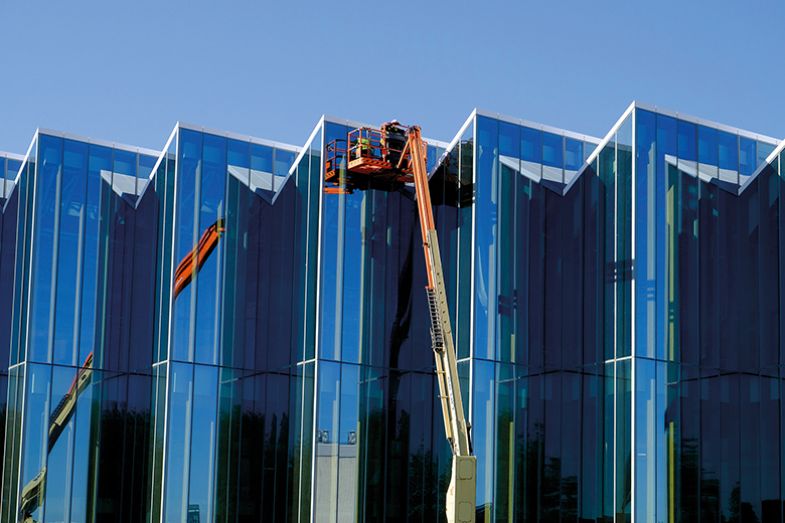
If Cambridge were significantly bigger, its housing costs would also drop, Westlake predicts, making it easier for people like teachers and nurses to find places to live. And this, too, would have economic benefits because, for example, a professor who wanted to launch a biotech start-up would find it significantly easier to attract an accountant to the area.
Unease about the inequality generated by Cambridge’s research-driven boom isn’t confined to Cambridgeshire. There is also concern about the proportion of national research funding that goes to Cambridge and other parts of the Cambridge-Oxford-London “golden triangle”, and the government has pinpointed that as part of its agenda to “level up” less wealthy UK regions, with a pledge in this month's budget that much of an immediate £400 million hike in research spending would be spent outside the golden triangle.
But while Westlake supports levelling up and rebalancing research investment, “Cambridge and Oxford are still going to be powerhouses of knowledge and research, throwing off economic spillovers – which, at the moment, we are not taking advantage of, because these places are so expensive to live near.”
“If Cambridge grew to the size of, say, Bristol [with a population of around 500,000], the UK would get richer as a result and the money we spend on research would have a bigger economic impact and do more to improve the world,” says Westlake. He suggests that building a big new town close by could be one option.
The problem, he says, is that expanding Cambridge is “nobody’s job in central government. This is a local political question.”
A local plan for an extra 34,500 homes in Greater Cambridge was agreed in 2018. And, according to the city council’s Herbert, “we’ve already signed up to a significant amount of growth. The question we’re now out to consultation on is: Is that enough?” But, in his view, Cambridge’s central role in the national economy “doesn’t mean that we have to grow rapidly”. There is also a need to have a “balanced city” and there is still “a lot more to Cambridge than the high-growth sectors”.
But the government is clearly in a hurry. In the budget, the government said it would “examine and develop the case for up to four new Development Corporations" in locations near Cambridge, including "plans to explore the case for a New Town at Cambridge, to accelerate new housing and infrastructure development”.
For his part, the Cambridge Network’s Cleevely thinks it would be “entirely feasible” to grow the population of Cambridge’s metropolitan area to 1 million by 2060. “Whether we want to do that, I don’t know,” he adds. But without major infrastructure investment, the Cambridge region will face “gridlock” by the 2030s, he predicts.
What is needed, he thinks, is a “proper strategic plan” for how Cambridge will grow, with consideration of how the city's “bottom 25 per cent” can be included in prosperity. He also calls for research on the factors driving Cambridge’s innovation system and remarkable economic growth, to help “transfer that to the rest of the UK”.
“If we can understand how it works, we can do it elsewhere,” he says.
John Morgan
Register to continue
Why register?
- Registration is free and only takes a moment
- Once registered, you can read 3 articles a month
- Sign up for our newsletter
Subscribe
Or subscribe for unlimited access to:
- Unlimited access to news, views, insights & reviews
- Digital editions
- Digital access to THE’s university and college rankings analysis
Already registered or a current subscriber?





